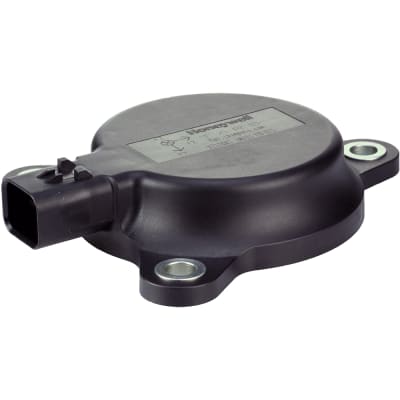Honeywell TARS-HCASS
TARS-IMU,Transportation Attitude Reference Sensor-HCASS,6-Axis,14/28V,CAN J1939
Mfr. Part #: TARS-HCASS / RS Stock #: 71218621



Price
Qty.
Standard Price
1
$590.47
Additional Inventory
Product Specifications
Product Attribute
Attribute Value
Search
Digital Interface Type
CAN 29-bit J1939
Housing Material
PBT Thermoplastic
IP Rating
IP67 ; IP69K
Maximum Operating Temperature
85 °C
Maximum Supply Voltage
36 V
Minimum Operating Temperature
-40 °C
Mounting Type
Chassis Mount
Number of Axis
3
Output Type
Serial
Resolution
0.058 degrees
Sensor Type
IMU
Start Up Time
500-2000 ms
Supply Current
100 mA
Supply Voltage
9-36 V
Overview
The Transportation Attitude Reference Sensor or TARS-IMU is a packaged sensor array designed to report vehicle angular rate, acceleration, and inclination for demanding applications in industries such as heavy duty, off-highway transportation.
TARS-IMU enables autonomous vehicle characteristics and enhances efficiency and productivity by reporting key data required to automate and monitor movements of vehicle systems and components. The sensor fusion algorithm can be customized for specific vehicle applications through on-board firmware, allowing movement data to be filtered for extraneous environment and vehicle movements.
With two sensor models for different power levels, TARS-IMU accommodates both 5 V and 9 V to 36 V vehicle power systems. While communication is carried to the vehicle through industry standard CAN J1939 connectivity.
As a standard, TARS-IMU is calibrated on aerospace-grade rate tables at the factory to provide calibration consistency between units.
TARS-IMU enables autonomous vehicle characteristics and enhances efficiency and productivity by reporting key data required to automate and monitor movements of vehicle systems and components. The sensor fusion algorithm can be customized for specific vehicle applications through on-board firmware, allowing movement data to be filtered for extraneous environment and vehicle movements.
With two sensor models for different power levels, TARS-IMU accommodates both 5 V and 9 V to 36 V vehicle power systems. While communication is carried to the vehicle through industry standard CAN J1939 connectivity.
As a standard, TARS-IMU is calibrated on aerospace-grade rate tables at the factory to provide calibration consistency between units.










 Bulk pricing available
Bulk pricing available
